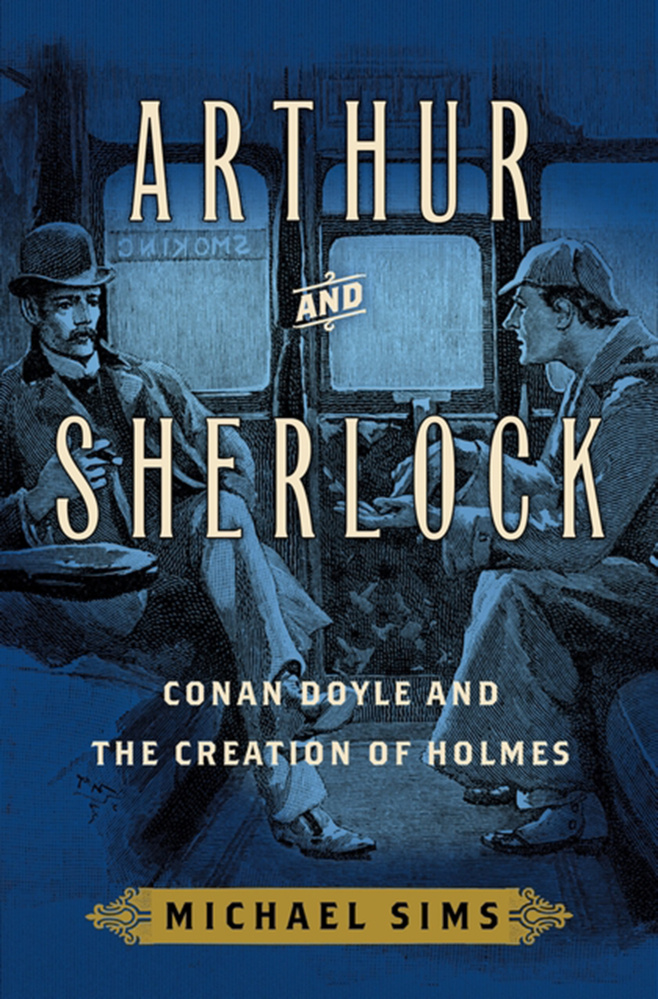No matter which Sherlock Holmes you visualize as you read the canon – the suave, top-hatted Jeremy Brett? Perhaps the ever-so-tightly-suited Benedict Cumberbatch? – you’re wrong.
The “real” Holmes was a patrician gent named Dr. Joseph Bell, who lectured at the University of Edinburgh’s medical school in the 19th century and had a knack for revealing things about a person that a casual acquaintance could never have known. (Just like somebody else we know: “You know my method. It is founded on the observation of trifles,” said he, in “The Boscombe Valley Mystery.”)
Among the students captivated by Bell’s teaching method was Arthur Conan Doyle, who drew upon Bell’s uncanny ability in creating Holmes, his fictional hero.
How Bell became Holmes, and how Bell and other forces helped Conan Doyle became a blockbuster author are described in great detail in Michael Sims’ “Arthur and Sherlock,” a worthy addition to any scholarly Conan Doyle/Holmes bookshelf. Many Holmes fans know the bones of the origin story, but Sims dives deep into Conan Doyle’s biography to put flesh on it. The physician-turned-writer becomes much more human to the reader in the process.
As a new doctor, for example, Conan Doyle agreed with the then-common notion that it was unseemly for a physician to answer his office door, so in 1882 he pressured his mother to send his 9-year-old brother Innes to act as gofer. In fact, the doctor was so self-conscious, he grew his impressive crop of facial hair to look older and more distinguished.
Before those days, though, Conan Doyle was a student and clerk to Bell, marveling at his mentor’s mental powers. Dr. Bell once pegged a patient for a cobbler, Sims writes, deducing from “a worn place on the inside of the knee of a patient’s trousers. It was where a cobbler rested his lapstone,” a tool for stretching leather. He spotted a linoleum factory worker by the industry-specific rash on her hands, and surmised the child she brought in was not her only one, as the lad’s coat was much too big and obviously a hand-me-down.
Why, then, was Holmes not called Bell? Conan Doyle wanted a name that “implied character,” Sims tells us, and he toyed with the dreadful-sounding Sherrington Hope. He likely ended up with Holmes because of his admiration for Oliver Wendell Holmes, Sims writes, and in the early 1880s a Chief Inspector Sherlock was sometimes in the newspapers – which the young doctor read religiously – due to his sleuthing skills. Holmes does have Bell’s gray eyes and several of his mannerisms. Appropriately, of Sherlock’s rotund and secretive brother, Mycroft, we learn nothing.
A nit here: At times, the book reads a little like an overstuffed suitcase, with facts spilling out the sides; it makes for heavy going. We could travel lighter not knowing that Bell’s own mentor, who died in 1870, drove a yellow carriage with “C-spring suspension.” Or that Conan Doyle’s godfather “spent the sweltering summer days in his shirtsleeves” when young Arthur visited him in Paris. Or even that, “Ambition and artistry were in the very air of Edinburgh,” frosted a few pages later with “Scholarship was revered in Edinburgh.” Fans of Holmes and his creator, however, will find the journey is worth the tiny bumps.
Send questions/comments to the editors.



Success. Please wait for the page to reload. If the page does not reload within 5 seconds, please refresh the page.
Enter your email and password to access comments.
Hi, to comment on stories you must . This profile is in addition to your subscription and website login.
Already have a commenting profile? .
Invalid username/password.
Please check your email to confirm and complete your registration.
Only subscribers are eligible to post comments. Please subscribe or login first for digital access. Here’s why.
Use the form below to reset your password. When you've submitted your account email, we will send an email with a reset code.